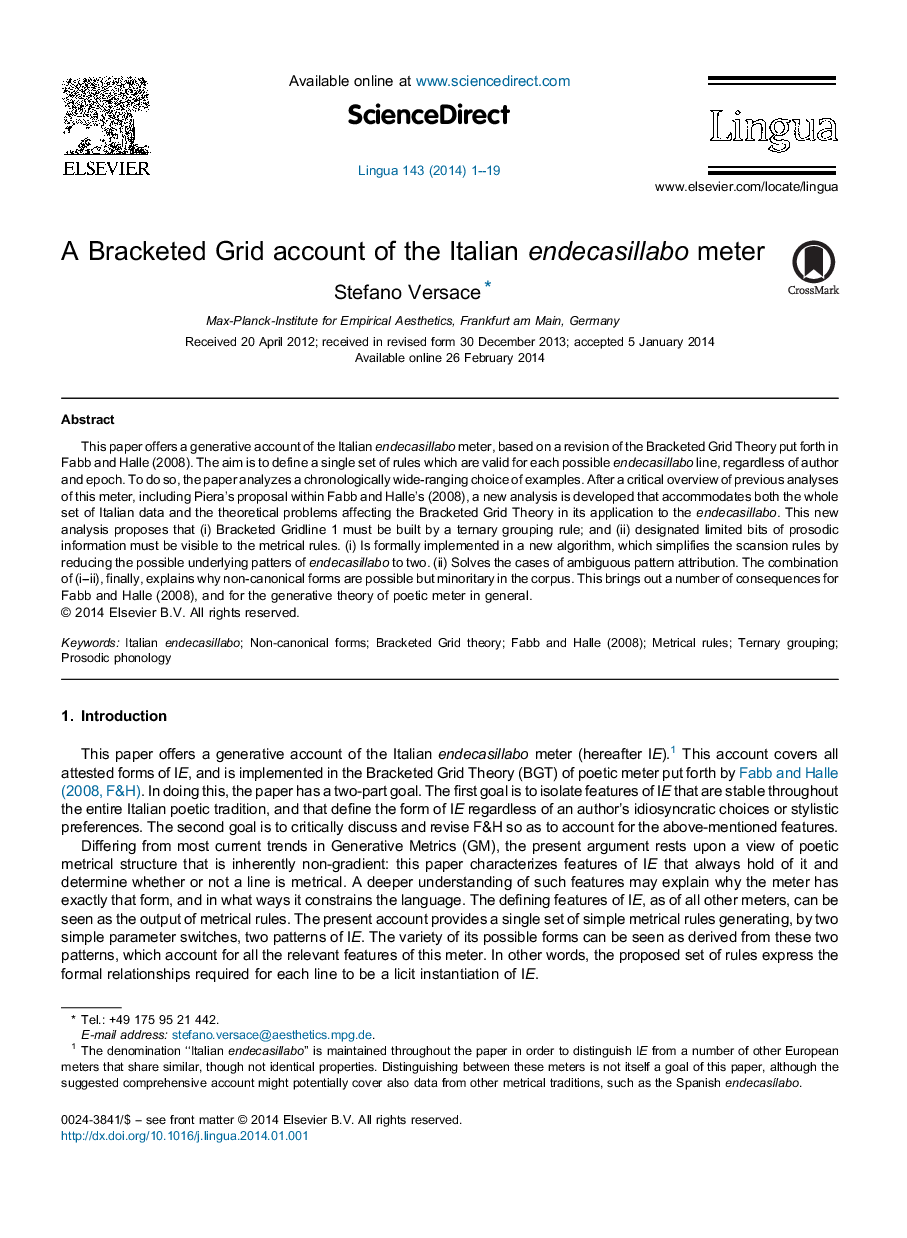| Article ID | Journal | Published Year | Pages | File Type |
|---|---|---|---|---|
| 935502 | Lingua | 2014 | 19 Pages |
•The paper offers a Bracketed Grid account of the Italian endecasillabo meter.•The paper defines a single set of rules valid for each possible endecasillabo line.•The paper provides a brief critical overview of previous analyses of this meter.•A revised algorithm for Fabb and Halle's account of endecasillabo is developed.•RevisedF&H adopts ternary grouping rule at GL1 and a new stress maxima definition.
This paper offers a generative account of the Italian endecasillabo meter, based on a revision of the Bracketed Grid Theory put forth in Fabb and Halle (2008). The aim is to define a single set of rules which are valid for each possible endecasillabo line, regardless of author and epoch. To do so, the paper analyzes a chronologically wide-ranging choice of examples. After a critical overview of previous analyses of this meter, including Piera's proposal within Fabb and Halle's (2008), a new analysis is developed that accommodates both the whole set of Italian data and the theoretical problems affecting the Bracketed Grid Theory in its application to the endecasillabo. This new analysis proposes that (i) Bracketed Gridline 1 must be built by a ternary grouping rule; and (ii) designated limited bits of prosodic information must be visible to the metrical rules. (i) Is formally implemented in a new algorithm, which simplifies the scansion rules by reducing the possible underlying patters of endecasillabo to two. (ii) Solves the cases of ambiguous pattern attribution. The combination of (i–ii), finally, explains why non-canonical forms are possible but minoritary in the corpus. This brings out a number of consequences for Fabb and Halle (2008), and for the generative theory of poetic meter in general.
